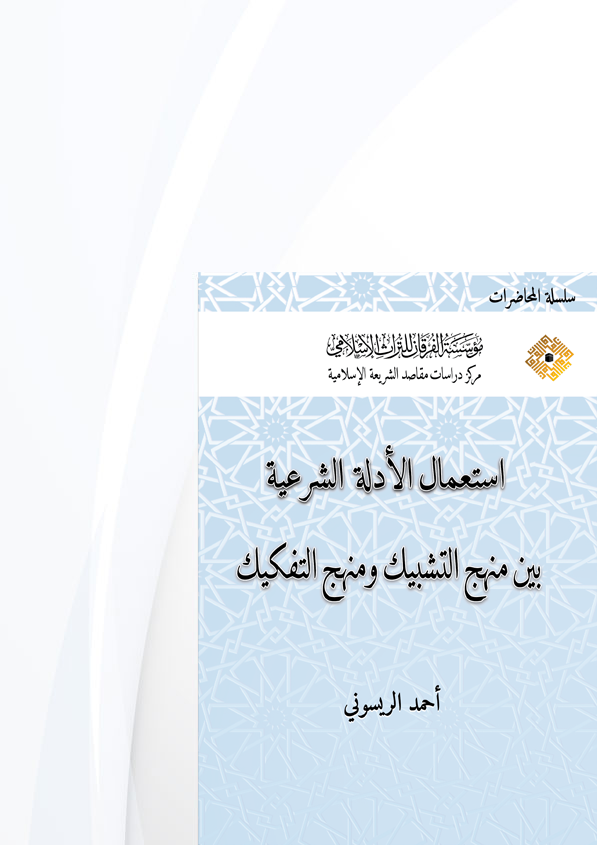Summary
This lecture addresses a topic of great importance. Dr Ahmad al-Raissouni discusses—in typically deep and meticulous fashion—the cross-linking and deconstruction methods / approaches, in all their complexities and extents. He immerses himself in researching and examining, accepting and disproving, critiquing and exercising creative reasoning (ijtihād), in the quest to reconcile theory and practice; by populating his robust scholarly work populated with appropriate and convincing explanatory examples.
Dr al-Raissouni commences his valuable book by explaining the terminology adopted in the lecture; beginning with the term—Islamic law indicants / proofs (al-adillah al-shar‘iyyah), which encompasses everything scholars - particularly jurisprudents (fuqahā’) and legal theorists (al-uṣūliyyūn) - use in their evidencing, and on which they base rulings and deduced meanings. These indicants comprise the Qur’ān, Sunnah, juristic consensus (ijmā‘), analogy (qiyās), consideration of valid interest (istiṣlāḥ), juristic preference (istiḥsān), the axioms (qawā‘id) of jurisprudence (fiqh) and legal theory (uṣūl), and intellectual reasoning and sound rational consideration.
According to the lecturer, the cross-linking method / approach is embodied by a network of indicants and axioms, joined to intellectual reasoning and empirical experiences. This is applied in juristic consideration by combining, linking, and attaching indicants / proofs together, as well as eliciting some from others. All these must be at scholars’ fingertips; some scholars list and detail them exhaustively, while others are more sparing. Indeed, indicants / proofs are not disconnected or isolated islands. He then presented three explanatory examples clarifying this approach.
The lecturer then proceeded to explain the deconstruction method / approach, saying that this is the exact opposite of cross-linking. Here, someone may evidence with a single Qur’ān verse (āyah), disregarding any others, even if these address - or relate to - the same subject. Furthermore, neglecting interest (maṣlaḥah), axioms, and a number of other indicants / proofs. Thus, if they encounter a single text or tradition, they quickly adopt it, and issue their rulings, on the basis that this is the requisite religious text. He added that, this deconstructive meaning is expressed in the Qur’ān, by: “those who divide the Qur’ān into little pieces”, i.e. presenting the Qur’ān as separate, conflicting, and dispersed fragments. The lecturer warned of the hazards of this deconstructive approach, whose practitioners understand religious texts piecemeal, and do not view the Qur’ān in a comprehensive way, in its full content and topics, semantics, and unity of outcome. Rather, they pit indicants against one another, or apply some indicants, while neglecting and discarding others, thus falling into error and contradiction.
Prior to presenting examples illustrating the importance and fruits of the cross-linking approach—namely the one securing the Divine Legislator’s intent, Dr al-Raissouni emphasised the questions to which the cross-linking method must be applied and upheld (i.e. deploying indicants / proofs). These are the multi-faceted, novel emergent issues, with present and consequential status. They may also be contentious, and hold special importance that needs to be elucidated, and the certainty of the Islamic law semantics in the particular case substantiated; for this purpose, all indicant / proof types are mobilised.



Reviews
There are no reviews yet.